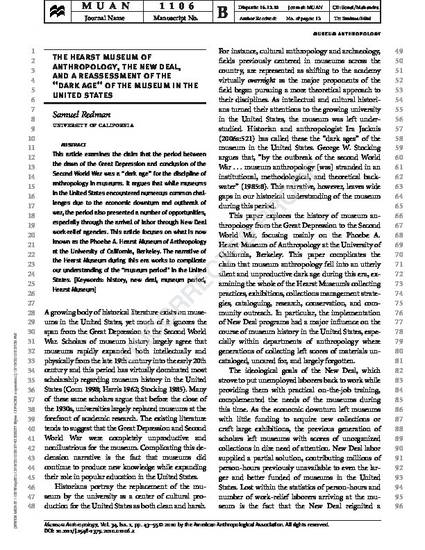
Article
The Hearst Museum of Anthropology, the New Deal, and a Reassessment of the ‘‘Dark Age’’ of the Museum in the United States
Museum Anthropology
(2011)
Abstract
This article examines the claim that the period between the dawn of the Great Depression and conclusion of the Second World War was a “dark age” for the discipline of anthropology in museums. It argues that while museums in the United States encountered numerous common challenges due to the economic downturn and outbreak of war, the period also presented a number of opportunities, especially through the arrival of labor through New Deal work-relief agencies. This article focuses on what is now known as the Phoebe A. Hearst Museum of Anthropology at the University of California, Berkeley. The narrative of the Hearst Museum during this era works to complicate our understanding of the “museum period” in the United States.
Keywords
- History; New deal; Museum period; Hearst museum
Disciplines
Publication Date
March 17, 2011
Publisher Statement
This is the pre-print version of the article. The published version is located at http://onlinelibrary.wiley.com/doi/10.1111/j.1548-1379.2010.01106.x/full
DOI: 10.1111/j.1548-1379.2010.01106.x
Citation Information
Samuel Redman. "The Hearst Museum of Anthropology, the New Deal, and a Reassessment of the ‘‘Dark Age’’ of the Museum in the United States" Museum Anthropology Vol. 34 Iss. 1 (2011) Available at: http://works.bepress.com/samuel_redman/2/
